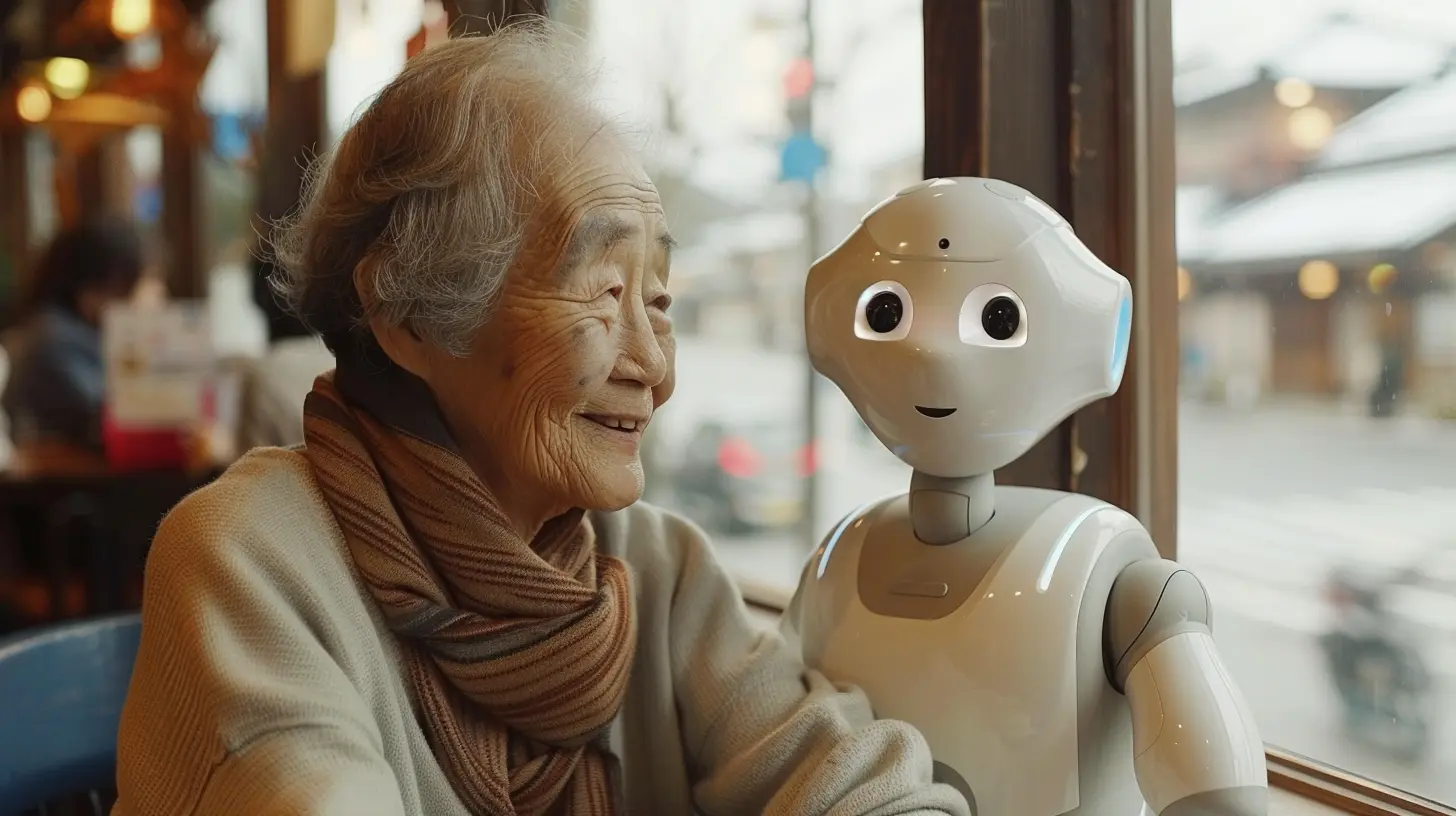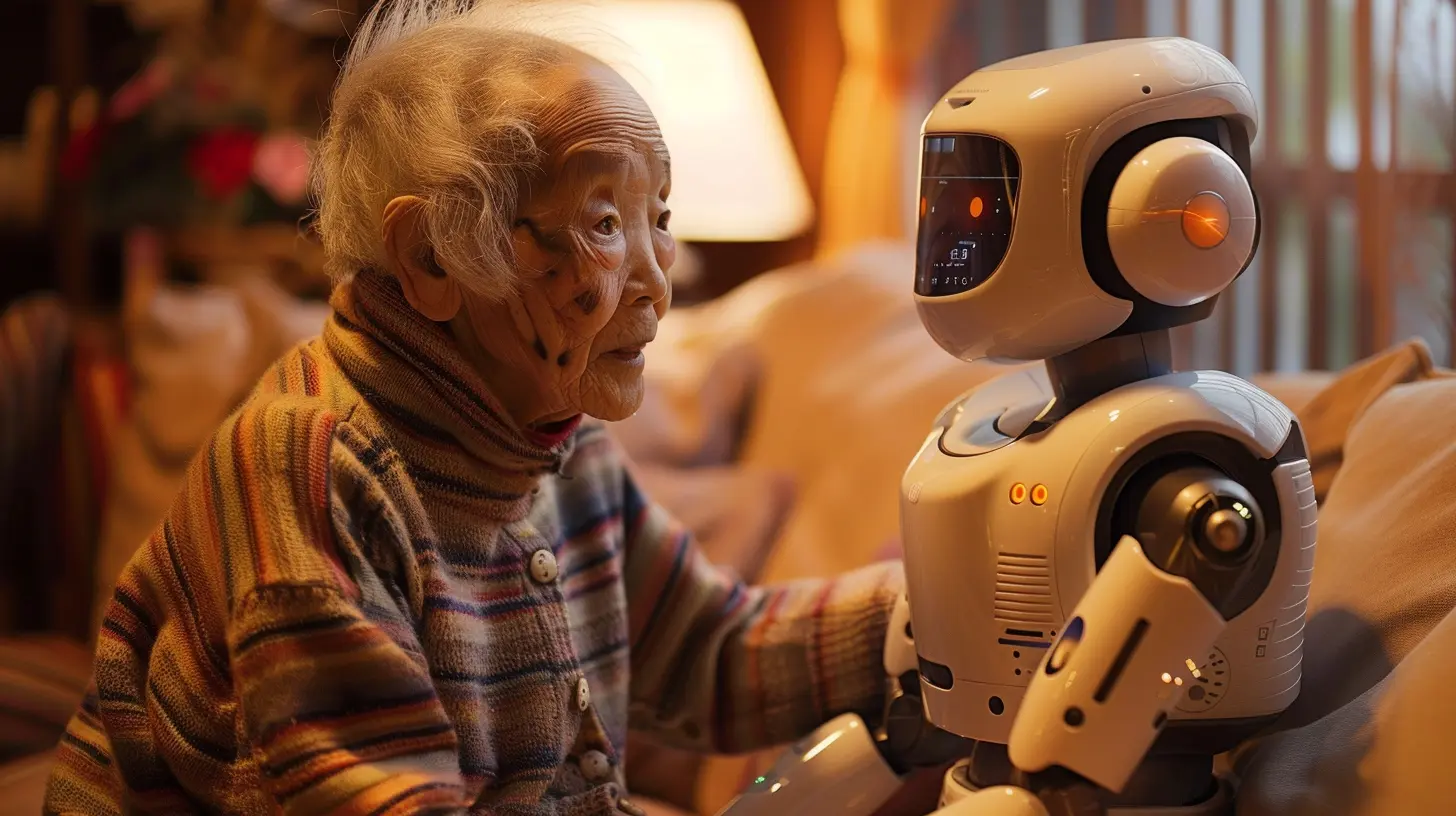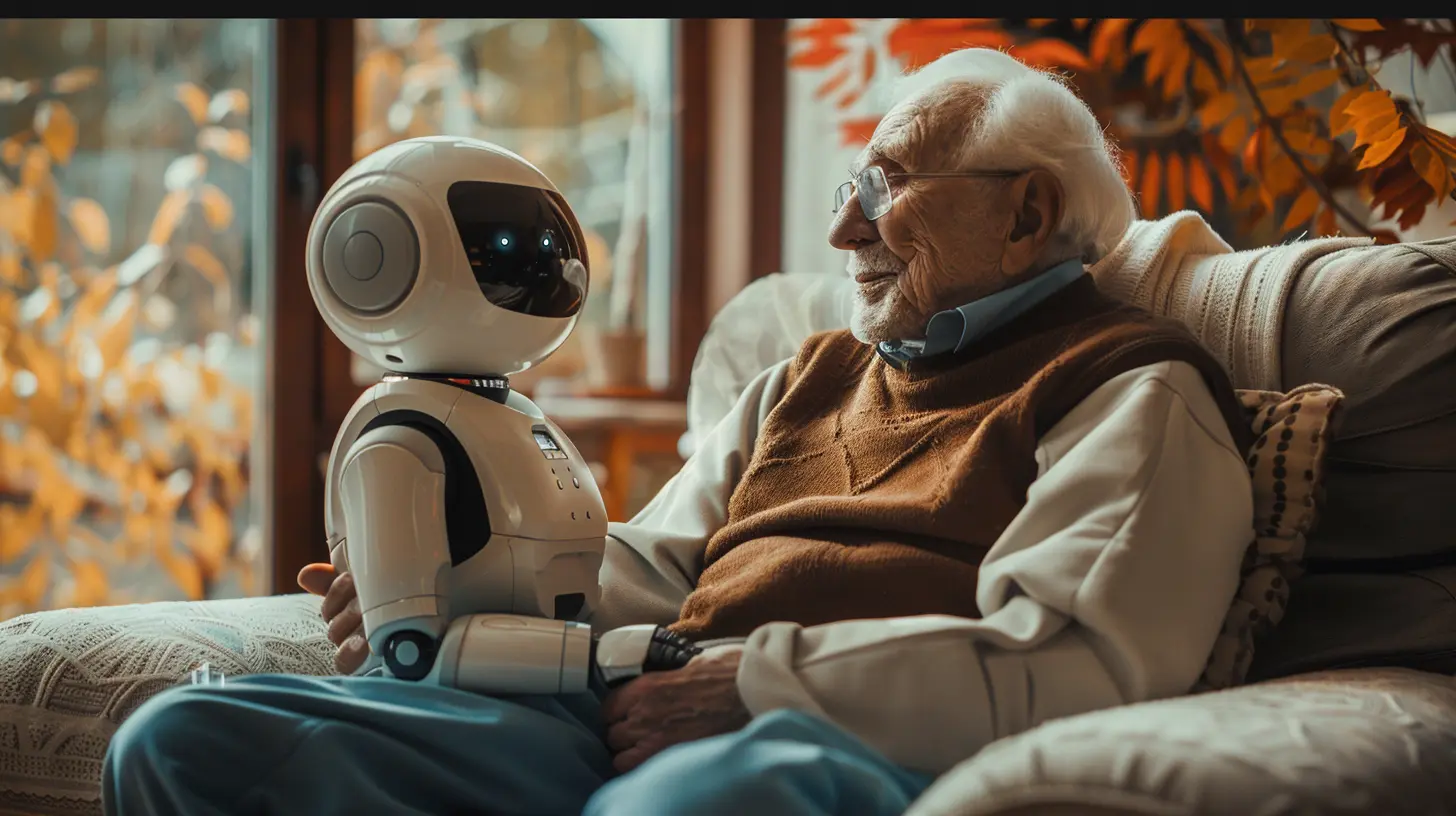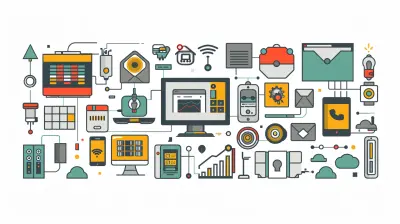How Robots Are Enhancing Elderly Care and Independence
27 October 2025
Aging is an inevitable part of life, and as our global population grows older, the demand for elderly care is skyrocketing. With advancements in robotics and artificial intelligence, caregivers are now getting much-needed support from robotic companions. These high-tech helpers are not just filling in the gaps left by human caregivers—they're revolutionizing elderly care altogether.
So, how exactly are robots making life easier for seniors? Let’s dive in.

The Growing Need for Elderly Care
The world is aging at an unprecedented rate. According to the World Health Organization (WHO), the global population of people aged 60 and above is expected to double by 2050, reaching 2.1 billion. However, the availability of caregivers isn’t keeping up with this surge.Many seniors prefer to live independently rather than rely on full-time assistance. However, mobility issues, cognitive decline, and medical conditions often make this challenging. This is where robots come into play—providing care, companionship, and even medical monitoring to help seniors maintain their independence.

How Robots Are Revolutionizing Elderly Care
1. Companion Robots: Fighting Loneliness
One of the biggest challenges in elderly care is loneliness. Many seniors live alone, and social isolation can lead to depression and a decline in mental health. Robots like ElliQ, Paro, and Buddy are designed to provide emotional support to seniors.These AI-powered companions engage in conversations, remind seniors to take their medication, and even offer entertainment like music and games. Paro, for example, is a robotic seal that responds to touch and sound, mimicking the effects of pet therapy. The result? Seniors feel less lonely and more emotionally connected.
2. Assistive Robots: Helping With Daily Tasks
Simple everyday tasks can become daunting as people age. Bending down to pick up objects, reaching for things on high shelves, or even getting out of bed can be difficult. Enter assistive robots like Robear and Care-O-bot.- Robear is a robotic caregiver that can lift elderly individuals from beds to wheelchairs with ease.
- Care-O-bot assists with tasks like fetching objects, reminding seniors of appointments, and even serving drinks.
These robots aren’t replacing human caregivers; they are simply making life easier for both seniors and their caregivers.
3. Medical Monitoring Robots: Keeping Health in Check
Imagine having a personal doctor at home, 24/7. That’s exactly what telepresence and health-monitoring robots offer.Robots like Mabu and Dinsow collect real-time health data, remind patients to take medications, and alert medical professionals if something seems off. Some models are even equipped with AI-powered fall detection, automatically calling for help if a senior falls and doesn’t get up.
For those with chronic conditions like diabetes or hypertension, these robots provide constant monitoring, ensuring timely medical intervention.
4. Mobility Robots: Restoring Independence
For seniors with mobility challenges, getting around the house or outside can be a struggle. Mobility robots like iRobot Ava and Toyota’s Human Support Robot (HSR) are designed to assist seniors in moving safely and effortlessly.- HSR can retrieve objects, open doors, and even assist with household chores.
- Ava helps seniors navigate their homes, offering real-time guidance and support.
These robotic solutions allow seniors to move more freely without relying entirely on human assistance.
5. Smart Home Integration: A Safer Environment
Robots aren’t just standalone machines; they can be part of a larger smart home ecosystem. Integrated with voice assistants like Alexa or Google Assistant, these robots help seniors control their environments effortlessly.For example:
- Smart pill dispensers remind seniors to take their medications.
- Home security robots can detect unusual movement and notify relatives or emergency services.
- Automated cleaning robots help maintain a tidy living space without physical strain.
By integrating robotics with smart home technology, seniors can live safer and more independently.

The Benefits of Robots in Elderly Care
The introduction of robots into elderly care isn't just about convenience—it brings tangible benefits:✅ Increased Independence – Seniors can stay in their own homes longer, without the need for full-time assistance.
✅ Reduced Caregiver Burden – Robotics alleviate some of the challenges faced by human caregivers, reducing burnout.
✅ Enhanced Safety – Fall detectors, health monitors, and security bots create a safer environment.
✅ Better Mental Health – Companion robots help combat loneliness and depression.
✅ Medical Monitoring – Advanced robots provide real-time health updates for doctors and family members.

Challenges and Ethical Considerations
Of course, robotic elderly care isn’t without challenges. Some common concerns include:1. Cost – Advanced robotic caregivers can be expensive, making them inaccessible to some families.
2. Lack of Human Touch – While robots can assist, they can’t completely replace human companionship and emotional connections.
3. Privacy Issues – Constant monitoring raises concerns about data security and privacy.
4. Adaptation Resistance – Some seniors may find it difficult or intimidating to interact with AI-driven machines.
Addressing these issues requires a balanced approach—one that embraces technology while ensuring ethical considerations.
The Future of Robotics in Elderly Care
The potential for robotics in elderly care is limitless. As AI continues to evolve, future robots may:🔹 Offer even more personalized companionship.
🔹 Improve mobility assistance with greater precision.
🔹 Provide more advanced predictive health monitoring.
🔹 Become affordable and accessible to a larger population.
With continuous advancements, robots will play a crucial role in shaping the future of elderly care—ensuring that seniors live more comfortably, independently, and safely.
Final Thoughts
Technology is reshaping the way we care for the elderly, offering solutions that were once considered futuristic. While robots won’t replace human caregivers anytime soon, they are invaluable partners in enhancing the quality of life for seniors.With ongoing innovations, we can expect even smarter and more compassionate robotic companions in the years to come. And who knows? Maybe, one day, having a personal robot caregiver will be as common as having a smartphone.
all images in this post were generated using AI tools
Category:
RoboticsAuthor:

Michael Robinson
Discussion
rate this article
1 comments
Lysara McLemore
Robots aren't just tools; they're companions redefining elderly care. As they enhance independence and safety, we're not just witnessing technology in action, but a profound shift in how we nurture our aging population’s dignity and well-being.
October 28, 2025 at 3:50 AM

Michael Robinson
Thank you for your insightful comment! Indeed, robots are transforming elderly care by promoting independence and enriching the emotional landscape of companionship.


